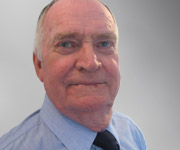THROUGHOUT Australia, the Pharmaceutical Benefits Scheme pays for the cost of dispensing every time a prescription is filled, with the patient having access to a pharmacist for advice and counsel — unless they are an Aboriginal person living in remote areas.
Over the past decade or so, $234 million of PBS money has been spent on alternative arrangements for medicines in remote Aboriginal communities, yet thousands of Aboriginal people in these areas have never met a pharmacist.
All are much more likely to have met a doctor, a nurse and probably a bunch of allied health professionals, but no pharmacists.
This is despite an abundant supply of PBS medicines available to these communities since 1999 when special supply arrangements for remote Aboriginal health services (AHS) were introduced. Although this has improved access to PBS medicines to 170 AHS centres across remote Australia there is little information on whether it has actually improved health outcomes.
The extravagant nature of the supply scheme sees pharmacies doing the job of wholesalers. The pharmacies involved are paid twice as much as regular pharmacy wholesalers through a mark-up on costs and a bonus handling fee of $2.74 for each item supplied (up from $1.14 in the first 8 years).
That means an AHS receiving 30 000 PBS items a year can generate a gross profit of $200 000 for the supplying pharmacy. There is an additional amount paid to pharmacists for 6-monthly visits to the AHS centres they supply, during which they may check stock, liaise with clinic staff and conduct an educational session for nurses and Aboriginal health workers. The only time these pharmacists may meet a patient is if they are asked to do a home medication review, which is not part of these special arrangements but does attract an additional Medicare payment.
In contrast to the amount paid to the supplying pharmacy, the AHS receives nothing. No dispensing fee, no contribution to employing a pharmacist, no encouragement to train pharmacy technicians.
It is obvious pharmacists can’t be everywhere but, in this day and age, technology is available so medicines can be dispensed remotely and supervised from a central point. It may seem hard to believe, but in 2011 most AHS centres do not have a dispensing system that records, labels and controls medicine stocks — handwritten labels are the norm.
So, no data is available on what drugs have been supplied to patients despite the fact this discrete population cohort is one of the most disadvantaged in Australia with a high prevalence of chronic diseases.
It should be possible to analyse medicine use to identify best-practice prescribing and correlate this with hospital admission data. No other sector of the Australian population can be analysed in such a specific way and yet Medicare Australia is unable to release the data from the 50 retail and hospital pharmacies taking part in this scheme, citing commercial-in-confidence reasons.
The Drug Utilisation Sub-Committee of the Pharmaceutical Benefits Advisory Committee provides an annual detailed analysis of PBS usage across Australia but it does not include data from remote AHS centres. The Australian Institute of Health and Welfare is limited in what it can analyse for the remote Aboriginal population due to the limitation on the release of data.
This must change in the interests of better practice.
The current special supply program discriminates against remote Aboriginal communities because it refuses to bring pharmacy practice standards in these areas up to the level of that in mainstream Australia. This must be examined — without bureaucratic and vested interests — to come up with recommendations that favour the most important person in this issue — the patient.
A Senate inquiry into the effectiveness of the special arrangements for the supply of PBS medicines to remote area AHS centres is now calling for submissions, which close soon on 30 June.
The need for this inquiry is clear. Let’s hope it will influence future policy to rectify the current program failures.
Mr Rollo Manning is a pharmacist and consultant to Aboriginal communities and organisations in economic and social development and health service delivery. He can be contacted at rollom@iinet.net.au
Posted 14 June 2011

 more_vert
more_vert
After many years working in Arnhem Land I came to the conclusion that far from helping remote Aboriginal communities to “develop” we use them as pipelines for transferring money from one part of our dominating “white” society to another. The classic cases are public servants (as I was), the construction industry and the food supply industry (store managers). This incisive article now shows how pharmacy suppliers have joined this pipeline and how the lack of meaningful statistics help to support it in practice. I wish Rollo well in his endeavours but I fear that the pipeline is very resistant to change and he will meet energy-draining passive resistance at every turn.
Great article.
Thanks for posting this excellent blog!
Why doesn’t the federal government fund a salaried pharmacist position in Aboriginal Health Services? Do they see no benefit in the services a pharmacist could provide one of the most disadvantaged communities in Australia?
A treatment plan established by a medical practitioner or nurse is only as good as the patient’s ability to adhere to that plan. The patient’s cultural beliefs, financial circumstances and health literacy all affect their willingess to adhere to a treatment program suggested by a treating doctor.
A pharmacist could provide medication counselling to patients at the point of dispensing and establish and manage a DAA system to improve medication compliance. Medications are a large component in the management of chronic illnesses such as diabetes, kidney disease and high blood pressure.
If the pharmacist has completed their accreditation they could also provide a medication review service for patients to assist with optimising medication use.